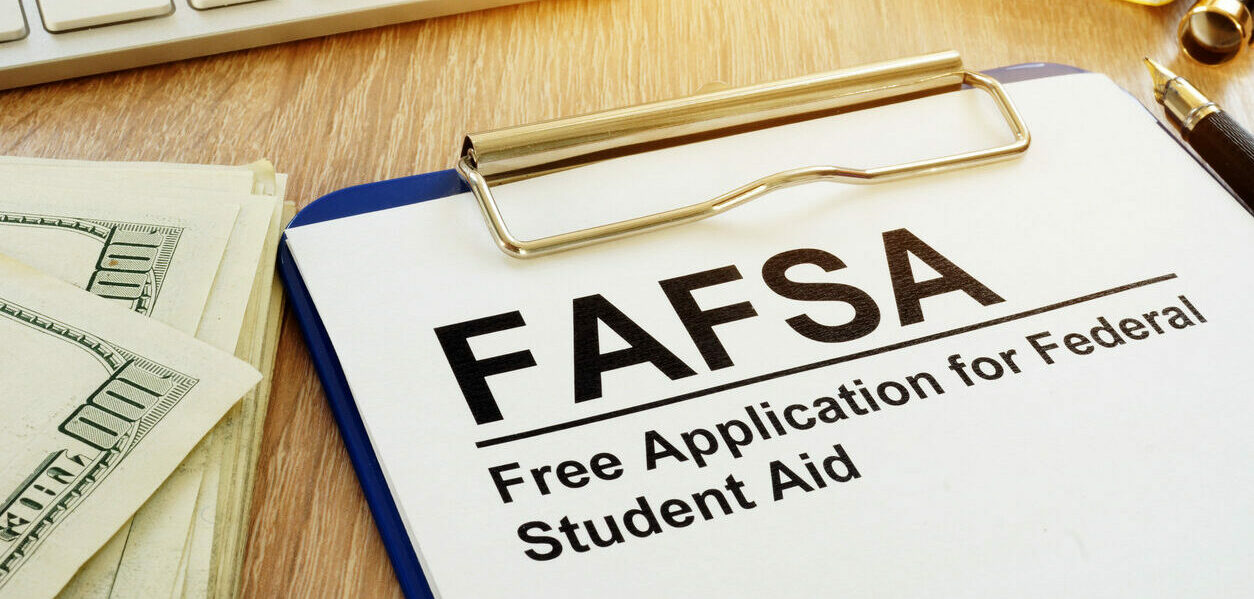Understanding how to get college financial aid can be confusing, especially for parents. The US Department of Education revamped the FAFSA for the 2024-25 academic school year to make this process less painful. The Free Application for Federal Student Aid (FAFSA), now shorter than its predecessor, is a key part of getting money to help pay for your child's college education. This guide will explain everything you need to know about FAFSA so you can help your high school student.
What is FAFSA?
The Free Application for Federal Student Aid (FAFSA) is a form that students and parents complete to become eligible for financial aid, including federal grants, loans, and work-study programs. By filling out the FAFSA, students can access financial aid from the federal government, state, and the college to help pay for college. In many cases, colleges use the FAFSA to award both need-based and merit-based aid.
As a parent, your involvement in the FAFSA process is important. Your financial information will be used to determine your child's eligibility for aid. However, it does not mean you will be liable for any loans the students take out in their name.
When to Apply for FAFSA
The FAFSA application opens on October 1 each year for the following academic year. It is available online as well as in paper form. You can submit the application between October 1 and June 30—for 20 months.
For instance, if you're a rising high school senior planning to attend college for the first time in the fall of 2025, you can apply for financial aid starting on October 1, 2024, through June 30, 2026. Be sure to pay attention to federal, state, and college-specific deadlines to ensure your application is submitted on time. Applying early is crucial because some financial aid is awarded on a first-come, first-served basis.
>>RELATED: Financial Aid Guide
Who Fills Out the FAFSA?
Anyone eligible to apply for federal financial aid can fill out the FAFSA. A student who is considered a dependent will need to complete the FAFSA with a parent. To be considered dependent for FAFSA purposes, the student must be under 24 years old, unmarried, without legal dependents, and receiving support from a parent or parents. This means that the student will fill out a section of the FAFSA. One or more parents (depending on several factors, such as who provides the most financial support to the student or whether a parent is remarried or living together) will also need to complete their respective sections of the FAFSA.
Students who are at least 24 years old and meet other criteria will be considered independent and will not need a parent to fill out the FAFSA.
How to Fill Out the FAFSA
1. Before you start the FAFSA, gather the necessary documents, including:
- Social Security numbers (for parents and students)
- Alien Registration numbers (if applicable)
- Federal income tax returns, W-2s, and other financial records
- Bank statements and records of investments
- Records of untaxed income
- As a student, you’ll need an FSA ID, which serves as your account username and password for signing the FAFSA form online.
- If you’re a parent of a dependent student, you’ll also need to create your own FSA ID to sign your child’s FAFSA form.
- Remember, it’s essential that each parent and student create their own unique FSA ID to avoid mix-ups.
- Visit the official FAFSA website at studentaid.gov
- Select “Start new form.”
- Log in using your FSA ID username and password.
- As a student, you will be able to invite your parents to complete your section of the FAFSA. Parents (biological or adoptive) and parent’s spouse are considered contributors. To find out which parent to invite as a contributor, visit the Federal Student Aid’s website.
While completing the form, you'll be able to give permission for the IRS to populate the FAFSA with information from prior, prior year (PPY) tax returns. If your family's financial situation has changed since the PPY tax returns were filed, contact the financial aid advisor at the colleges you're applying to.
It's important to remember that completing the FAFSA form is not a one-time event; you’ll need to do it for each school year. You can list up to 20 college on your FAFSA and the information will be sent to them including your Student Aid Index (SAI).
>>RELATED POST: Discover Affordable Colleges - How to Use the College Scorecard
After Submitting the FAFSA
Once you've submitted the FAFSA, you'll receive a FAFSA Submission Summary (FSS) summarizing your information in the FAFSA. Review the FSS carefully for accuracy. It will also include your Student Aid Index (SAI) which help colleges determine your child's financial need. Their financial need (cost of attendance minus the SAI) will determine how much financial aid your child is eligible to receive.
If selected for verification, you should provide any additional documentation requested in a timely manner. Delays in submitting this information could cause you to miss out on some financial aid since some colleges and federal funds are awarded on a first-come, first-served basis.
The FSS is sent to every college you included on the FAFSA. If you're admitted to the college, you'll receive a financial aid package which could consist of grants, scholarships, or loans. If you are one of the few lucky ones (, you could end up with a full-ride scholarship. However, the reality is only a very small percentage of students will get such an offer. In most cases, you might wind up with some loans. If you do not think the amount you've been offered will allow you to attend the college, consider appealing your award.
Common Mistakes to Avoid
Filling out the FAFSA can be tricky, and mistakes can delay your application or reduce the financial aid your child receives. Here are 10 common mistakes to avoid:
1. Missing Deadlines
There are several financial aid deadlines to be aware of. There are federal, state, and school-specific deadlines. Submit your application early to avoid missing out on aid.
2. Incorrect Information Entry
Double-check all entries for accuracy. Incorrect information can delay processing and affect aid eligibility.
3. Not Using the IRS Direct Data Exchange (DDX)
This tool helps ensure accuracy by importing tax information directly into the FAFSA.
4. Forgetting to Sign the Application
The student and the parent must sign the FAFSA electronically using their FSA IDs.
5. Underreporting or Overreporting Income
Provide accurate financial information to avoid complications during verification.
6. Leaving Fields Blank
Fill in all required fields. If a question doesn't apply, enter "0" or "Not Applicable."
7. Not Reporting All Required Information
Include all sources of income, including untaxed income and assets.
8. Incorrectly Listing Parent Information
If parents are divorced or separated, provide information for the parent with whom the student lived most during the past year.
9. Using the Wrong Form
Ensure you complete the FAFSA for the correct academic year.
10. Assuming You Won't Qualify for Aid
Always submit a FAFSA, even if you think you won't qualify. Some colleges award need based aid to families with six-figure income. Plus, many colleges require the FAFSA even when you're only being considered for merit aid.
Conclusion
Filling out the FAFSA can be a bit stressful; however, it's a much simpler process than before and the first step in securing financial aid for your child's college education. Understanding the process and avoiding common mistakes can help ensure your child receives the money they need. Start early, stay organized, and don't hesitate to seek help if needed.



